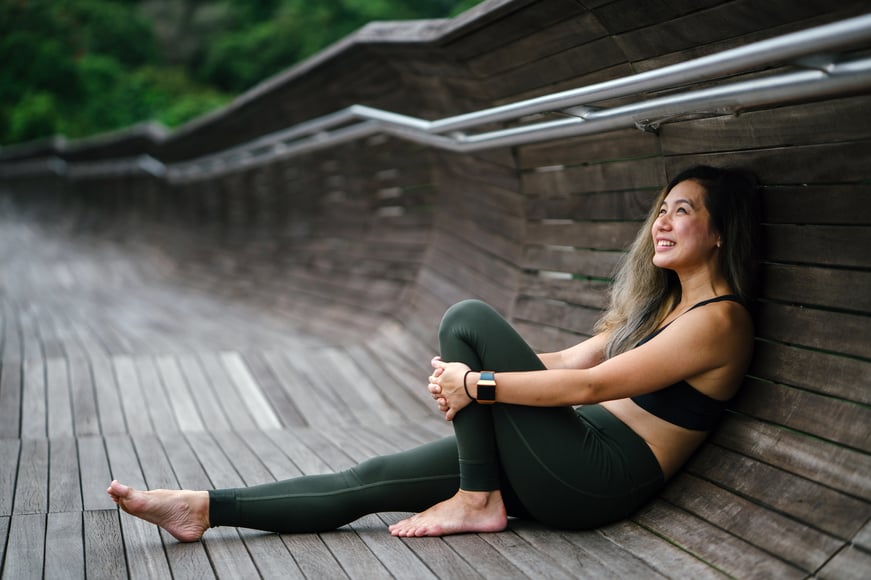
What impact will wearables have on qualitative market research?
Wearables are the new kid on the block when it comes to qualitative market research, but it probably won’t be long before they become a favorite tool in the research kit. Relatively new to the tech scene, they are gaining popularity fast with a range of demographics, particularly with Millennials.
So far the most popular wearables are fitness monitors, like the Fitbit, and smartwatches, most notably Apple Watch. But there are also digital eyeglasses, smart jewellery, and clothing items that have technological enhancements. In a world where mobile devices are must-have products, wearables are the obvious next step in making our tech fit seamlessly into our everyday lives.
Wearables Deliver Data Easily
For anyone working in data collection, wearables are like a dream come true because gathering information (e.g. asking a litany of questions, filling out tedious forms) from respondents can be a time-consuming aspect of qualitative market research. But wearables can provide a wealth of data on their users digitally, making it easy to collect valuable information with minimal effort.
Fitness trackers supply information on things like heart rate and sleep patterns, as well as data on the amount of exercise a person is getting throughout the day. Newer health-related wearables include a belt that can detect changes in your waist size and a sensor that can analyze your skin’s healthiness. Some wearables are tailored to specific athletics, such as headphones that analyze a person’s running style, or a mouthpiece that is currently being developed to detect brain injuries in people who play contact sports.
A variety of wearables are equipped with GPS, so a user’s location and path can be monitored. Wearables are also now being developed to assess aspects of the wearer’s environment, such as noise and light levels.

Learning About People Through Their Devices
It is obvious that healthcare researchers can benefit immensely from the fitness data that is readily available via many wearables, allowing them to look at everything from a patient’s pulse to their body temperature. But the usefulness of this information goes far beyond healthcare, impacting many other sectors, particularly retail. For instance, monitoring a participant’s steps and progress as they move about a store may offer insights on the effectiveness of store displays – and examining heart rates as they look at certain products could reveal what piques their interest most.
The information on sleep patterns could also have implications for retailers. Are customers sleeping in more on the weekends, and not going to bed until quite late at night? Maybe you should consider altering your store hours accordingly or even offering late-night offers for online shoppers. Having data on sleep patterns could also help marketers get a better sense of when certain demographics are likely to be watching TV or using the web so that they can identify ideal advertising times.
Being able to track a participant’s movement while also seeing environmental data could reveal some very intriguing insights, particularly regarding the optimal conditions for shopping. Do people buy more when the store is brightly lit, or when it’s in low lighting? Does a lot of noise and activity in the store stimulate shoppers into purchasing, or do they find it off-putting and more likely to exit the store without a purchase?
More Time For Qualitative Research
Obviously there is a limit to what can be learned by looking at raw data from wearables and market researchers should be careful not to jump to conclusions about what this information means. However, if you can effortlessly capture this data and have it in your hands, you can then start asking respondents the questions that allow you to dig deeper and understand the why behind the data.
For example, if you see from the wearables’ tracking information that a research participant doing a shopping task walked all over the first floor of a large retail store, but never ventured up to the second floor, you can explore that more through pointed questioning following the task. Were they too tired to walk up the stairs and couldn’t find a clearly marked elevator? Were they disinterested in what they had seen downstairs, so didn’t think it was worth exploring further? Or did it just happen that everything that appealed to them was on the first floor?
In this way the data gathered from wearables can be used as the foundation for the creation of deeper qualitative market research, because it helps point researchers in the right direction and inspires them to ask the questions that will lead to unexpected insights. So even though wearables do not themselves provide qualitative research, they are supportive of qualitative researchers’ needs, offering potentially valuable information at the start that may well lead to a better research outcome in the end.
Making Market Research More Natural
One of the greatest benefits that wearables have in market research is that they allow research participants to enjoy a more natural, real-world experience when they are taking part in a task. They may not have to take notes or have to deal with the pressure of remembering every single detail if the wearable device is doing some of that “remembering” for them.
Some wearables, particularly the smartwatch, may even offer researchers an opportunity to remotely request information directly from the participant while they are on task, perhaps having them answer a question or take a photo. This ability to track participants in the midst of a task is yet another major advantage that wearables provide for qualitative market research.
Wearing Your Info on Your Sleeve
Automatically collecting data, particularly sensitive health information or personal location information, can understandably make some people nervous. So those working in qualitative market research must keep in mind their ethical obligations if they undertake any research involving data gathered from wearables. It’s vital that they make sure all participants agree to and are comfortable with providing this information through the wearable device. Fortunately, in the era of selfies, personal blogging, and people “checking in” at restaurants (and everywhere else they go) on social media, many people are more than happy to share information about themselves.
Wearables have the ability to empower researchers with a great deal of precise and intriguing data, but they must remember that this information is only a starting point. The next step is to ask the questions that will allow them to tease out the genuine research insights that they’re looking for.
We love all things technology related, especially when it comes to the use within qualitative market research, if you do too, read our blog:














